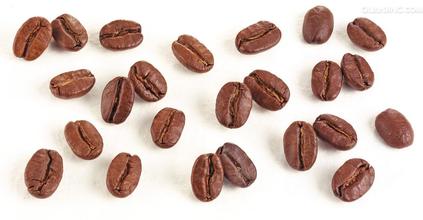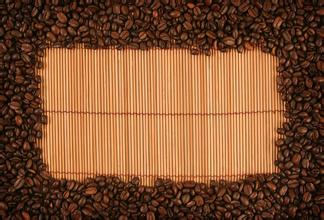Flavor description of Panamanian Hartmann Coffee Bean introduction of Grinding scale for Regional treatment of varieties
Introduction of Panamanian coffee beans
The red wine treatment method refers to the fermentation process of the wine treatment, and the selected coffee cherries are put into a sealed metal container for anaerobic fermentation, and the PH value in the fermentation process, the type and number of bacteria involved in the fermentation are controlled purposefully, even temperature and humidity, to ensure the quality of coffee beans, closed fermentation makes the aromatic substances less volatile, thus creating the champion flavor in the cup. The process is strictly efficient solarization, and it is more appropriate to name it after the red wine flavor treatment, because of its full alcohol thickness, red wine fermentation flavor, low acidity and excellent sweetness. today's Hartman Manor is a family business founded by Latip Hartman (son of Eloise) in 1940. In 1966 Latip married Dinola Sandy of Costa Rica. They have five sons, Latipa Jr., Alan, Alexander, Alice and Kelly. Each family member is responsible for the growth management, harvesting and handling of the coffee and the visit to the manor. A family manor that has been growing coffee for more than 100 years is a legend in itself. In such an advantaged planting environment after the beginning of World War I, it is not only the rosy summer of emerald, but the king of coffee, regardless of flavor, quality and value; but I think it is quite extravagant to drink rosy summer every day, and even if there is no economic pressure, it is not like eating shark's fin and bear's paw every day. The same is true of coffee. Only by dabbling in a wide range of subjects can you enjoy the pleasure of tasting coffee more.
On the basis of very excellent quality, the very people-friendly price of this coffee bean makes the performance-to-price ratio of this coffee bean. What is special about this coffee bean is that it is made up of three varieties, of which 40% are rosy summer varieties, giving this coffee a distinct rosy summer flavor. According to the information obtained, due to the historical reasons of the manor, in order to pursue yield at that time, the early Rosa varieties were mixed with the coffee trees of Kaddura and Kaduai, and in order to facilitate picking, coffee farmers did not reclassify them, but directly mixed the three varieties. After that, as Rosa rose to fame and the price was soaring, the processing plant began to carry out fine washing treatment for such a coffee bean, but mostly after the coffee fruit was picked, the floating beans were removed, and then the pulp was removed. Then the coffee beans were soaked in a fermentation tank, and the enzymes in the water softened the mucus attached to the peel of the coffee beans, and the natural yeast broke down the sugar in the mucus. This process is called fermentation. After the fermentation is completed, move the coffee beans to the sun field to dry. In the process of drying, you need to constantly turn the coffee beans to ensure the uniformity of the drying. Finally, the shell is kept in the warehouse, and some raw bean merchants place an order before shelling and bagging. The processed coffee tastes clean, emphasizing bright and lively acidity, as well as clear fruit flavor and floral aroma.

Important Notice :
前街咖啡 FrontStreet Coffee has moved to new addredd:
FrontStreet Coffee Address: 315,Donghua East Road,GuangZhou
Tel:020 38364473
- Prev

Kenya coffee beans estate production area flavor description processing variety characteristics production area introduction
The Kenyan government takes the coffee industry extremely seriously, and it is illegal to cut down or destroy coffee trees here. Kenya's coffee buyers are world-class buyers of premium coffee, and no country grows, produces and sells coffee as consistently as Kenya. All the coffee beans.
- Next

Introduction to the Flavor characteristics of Ethiopian Yega Snow Coffee
Yega Xuefei Coffee Sun sets a strict standard for collecting red fruits (as a result of coffee trees). Before exposure to coffee fruits, unripe green fruits or defective fruits are manually removed, and damaged or moldy fruits are removed in the process of sunlight. after two weeks, the flesh sugar and essence seep into the coffee beans, the water content is reduced to 12%, and then the hardened pulp, pectin layer and pods are scraped with a planer.
Related
- Detailed explanation of Jadeite planting Land in Panamanian Jadeite Manor introduction to the grading system of Jadeite competitive bidding, Red bid, Green bid and Rose Summer
- Story of Coffee planting in Brenka region of Costa Rica Stonehenge Manor anaerobic heavy honey treatment of flavor mouth
- What's on the barrel of Blue Mountain Coffee beans?
- Can American coffee also pull flowers? How to use hot American style to pull out a good-looking pattern?
- Can you make a cold extract with coffee beans? What is the right proportion for cold-extracted coffee formula?
- Indonesian PWN Gold Mandrine Coffee Origin Features Flavor How to Chong? Mandolin coffee is American.
- A brief introduction to the flavor characteristics of Brazilian yellow bourbon coffee beans
- What is the effect of different water quality on the flavor of cold-extracted coffee? What kind of water is best for brewing coffee?
- Why do you think of Rose Summer whenever you mention Panamanian coffee?
- Introduction to the characteristics of authentic blue mountain coffee bean producing areas? What is the CIB Coffee Authority in Jamaica?

